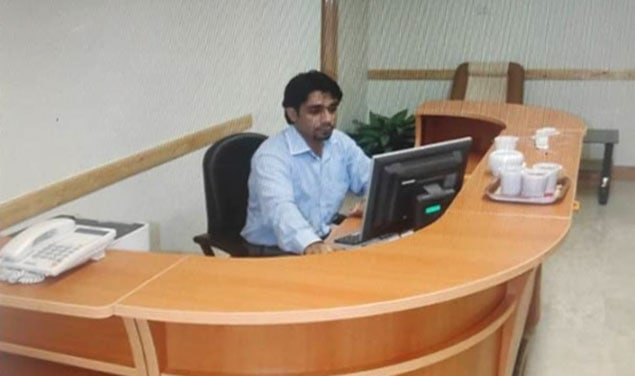CIA’s Betrayal of Colleagues
The betrayal of CIA to colleagues, an Iranian, one of our own, when his hand shakes from the burning of his face, reddened by the slap of humiliation, loses his senses, and his thoughts turn to seeking refuge with those sitting on the other side of the world, may create a story that ultimately is as bitter as hemlock, and though hearing and reading it is intriguing, it ultimately leaves nothing but regret.
Gholamreza Hosseini, a young engineer who was arrested at Tehran International Airport on charges of spying for the United States, never believed that Iranian security forces would know the details and every little thing he had done for the CIA, as well as many aspects of his relationship with American intelligence agencies. The most important piece of evidence he thought could be used against him, he destroyed at the airport, which was actually a memory card that he quickly placed in his mouth and chewed.
Gholamreza Hosseini is one of several Iranians who had a history of collaborating with American security and intelligence organizations and got caught. Reuters, in its special investigative program, has paid special attention to their stories and the process of their capture. The bitter fate of these Iranians and what ultimately happened to them can be significant for American media activists. Nevertheless, in its narrative, Reuters has focused more than anything on the CIA’s negligence and widespread weaknesses and the overly simplistic manner in which these Iranians were captured. We, as his compatriots, recount the story of Gholamreza Hosseini and what happened to him for you.
A Bright Start and a Dark, Bitter Continuation
Gholamreza Hosseini was a young engineer educated at Amir Kabir University, whose intelligence and talent succeeded in attracting the attention of his professors and led him to establish good partnerships with other young people like himself and start a company. His technical and service company brought him substantial profits, and the high quality of his work brought prosperity to his life. The young engineer and his company managed to secure good contracts in various fields and from different sources, and step by step, more important contracts and collaborations with military and special institutions also came his way.
All these positive developments and achievements for Gholamreza are not things we haven’t seen around us. We all know young people who have progressed with high intelligence and built their lives, and perhaps you, the reader, are one of them. However, the difficulties of progress, survival, and endurance in Iran cannot be easily denied. When the Ahmadinejad era began, Gholamreza’s life and business also changed. The Ahmadinejad era was a period of upheaval in administrative and economic structures and the dominance of specific forces and structures over Iran’s economy and trade.

Gradually, Gholamreza’s contracts and business were overshadowed by favoritism and the theft of contracts by those same forces, and loss after loss was imposed on his life. Special companies took control of organizing institutions and companies in Iran, and they took over all contracts and plans, forcing Gholamreza, like many others in similar positions, to operate in their shadow.
The happy days gradually turned into dark days for Gholamreza, and his disillusionment with Iran’s politics and society during the Ahmadinejad era quickly turned into deep hatred. In Gholamreza’s account of those bitter days of his life, his complaint about the situation he found himself in is serious. He told Reuters investigative journalists about the ignorance and unawareness of the nouveau riche Ahmadinejad supporters and the military forces dominating the economy, and that what happened to him was akin to assault.
Thus, the slap of humiliation and the increasingly strained situation of life and livelihood turned Gholamreza’s gaze overseas. The depth of resentment and hatred created from Iran’s politics and society led to a point where one day he opened the website of the American intelligence agency and simply clicked the contact link and sent a message: ‘I am an engineer working at the Natanz facility and I have information.’
So far, the series of articles ‘CIA’s Betrayal of Colleagues’ has been published in four parts. You have read the first part. To read the other parts, click on the links below.
CIA’s Betrayal of Colleagues Part Two
CIA’s Betrayal of Colleagues Part Three
CIA’s Betrayal of Colleagues Part Four

